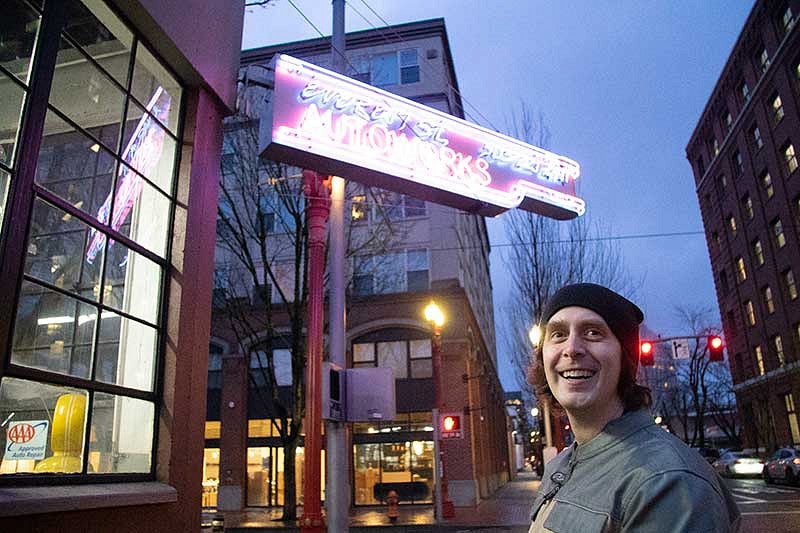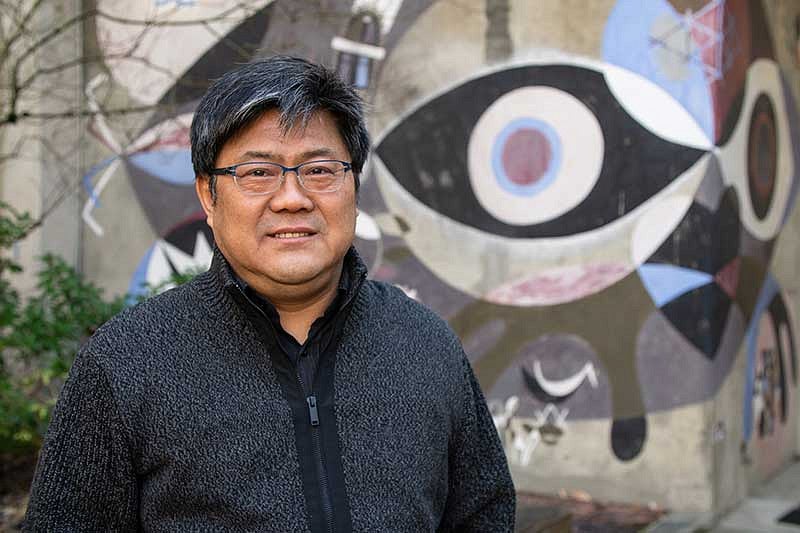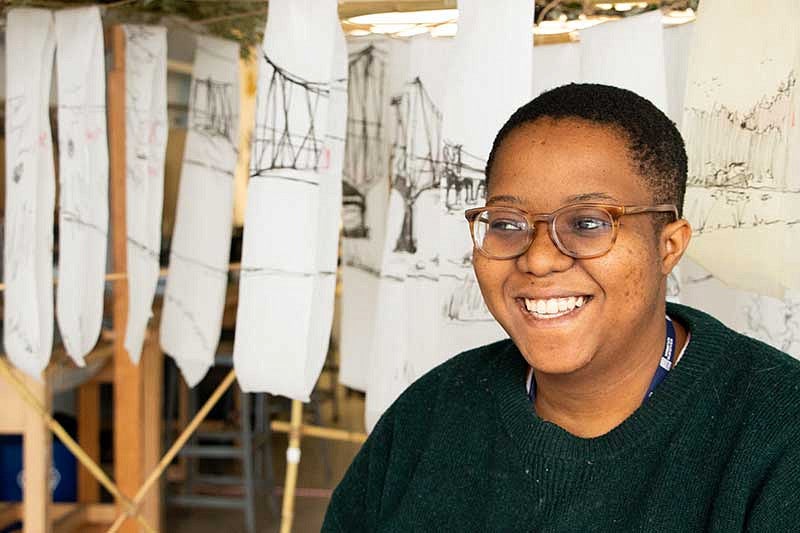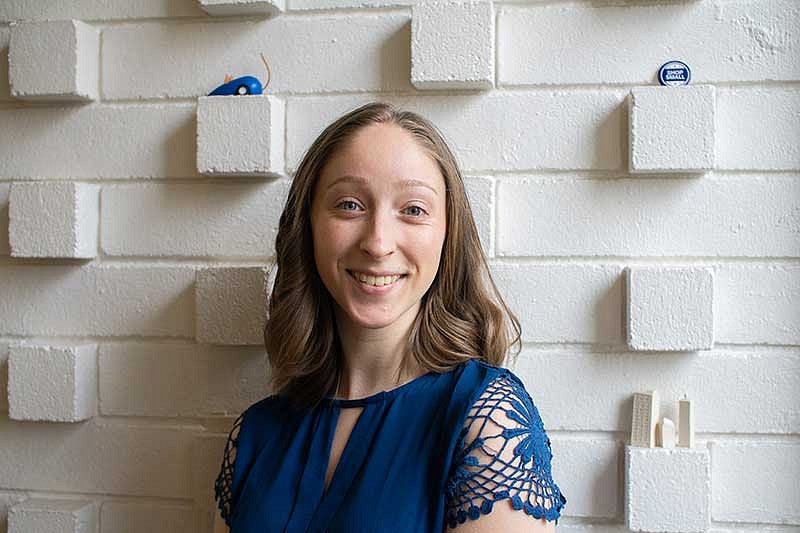
From Dragon Ball Z to Stadiums
Kansas City–based architectural designer Joel Mbala-Nkanga remembers falling in love with the art of Dragon Ball Z and video games while growing up in the Democratic Republic of Congo and Gabon—his first exposure to design.
“When I lived in Africa those cartoons would come on all the time,” said Mbala-Nkanga, MArch ’18. “When I was in middle school and high school, I was really big into drawing manga and anime.”
Years and several journeys back and forth across the Atlantic later (Mbala-Nkanga was born in Illinois), he has refined his design skills and applies them to large-scale projects such as stadium expansions at Purdue University and the University of Texas.
Shortly after graduating, Mbala-Nkanga joined Populous, a global architecture and design firm that specializes in large-scale projects, including spaces such as Wembley Stadium, and event planning for the Olympics and the Super Bowl.
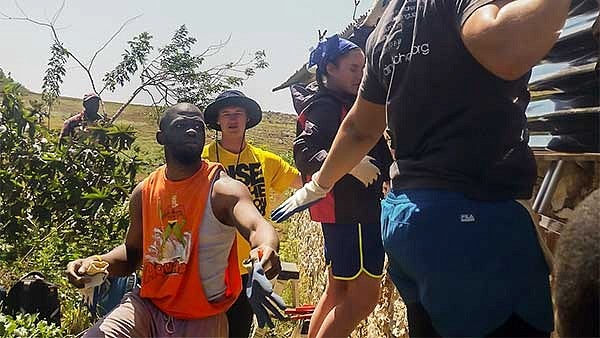
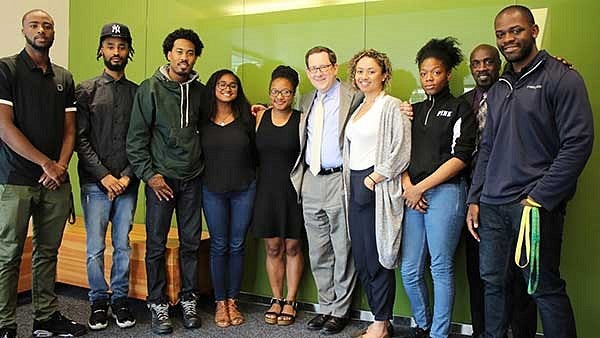

The Campus Experience
Mbala-Nkanga said his graduate school experience in the Department of Architecture at the School of Architecture & Environment primed him for his career today. As a student, his coursework included projects imagining large-scale spaces such as the Knight Campus and Tykeson Hall.
“The [building] site was our campus. We could go to the site whenever we wanted or needed to. We got to talk to the professors who would use the building,” Mbala-Nkanga said. “It was a great opportunity for us to learn.”
He was also a pivotal member of the Black Student Task Force, advocating and planning for the UO’s Black Cultural Center, which opened in 2019 as the Lyllye Reynolds-Parker Black Cultural Center.
“So often, people choose not to help or make a difference because they won’t see the fruits of their labor,” Mbala-Nkanga said. “To see something go from something we just talked about in rooms to something being built—it felt incredible.”
Coming from Michigan—where he had studied interior design as an undergraduate and won awards for designing affordable housing for countries such as Haiti, where he did earthquake recovery volunteer work—Mbala-Nkanga wanted “to live in a forest on the West Coast.”
Among the biggest draws to the College of Design for him were its emphasis on sustainability, research, and designing for people.
Research: Timber to VR
In addition to the campus site studies, Mbala Nkanga worked with a research team led by Architecture Department Head Nancy Cheng, in collaboration with Oregon State University’s Wood Science and Engineering, on the project “Timber Tectonics in the Digital Age,” about how classic timber structural systems can be transformed by digital techniques.
He researched urbanism with Architecture Associate Professor Philip Speranza on the Urban Design in Barcelona summer study abroad program, and used virtual reality technology in lighting studies with Assistant Professor Siobhan Rockcastle, who also directs the Baker Lighting Lab.
“We got to take a space we designed in studio and take it into virtual reality and do observations on students and how they felt in the space,” said Mbala-Nkanga, who explained that it gave him a head start for using VR in his current position.
Learning from Haiti
In 2016, Mbala-Nkanga returned to Haiti to do more volunteer recovery work. He said he was grateful to his professors for allowing him the flexibility and support to work on this passion project.
“Something about what happened in Haiti in 2010 stuck with me personally,” Mbala-Nkanga said. With his church, he helped build rain gutter systems for mountain villages. “Seeing the aftermath of the earthquake, it had me questioning the reason why it was so difficult for them to recover from it.”
He identified the answer in parallels he found between Haiti and his former homes of the Democratic Republic of Congo and Gabon—they weren’t using sustainable building methods that are both modern and vernacular (i.e., “using materials that are found locally, for the people and by the people, materials they already know how to use”).
Looking back, Mbala-Nkanga credits the cooperative aspect of the School of Architecture & Environment for his success.
“You never feel like your classmates are out to get you, which is how a lot of architecture schools are. Everyone here wants to help you and share work, which fosters a very strong collaborative environment,” he said. “And collaboration is a huge part of what I do now.”
One other UO alum works for Populous—David Jones (BArch ’15)—but Mbala-Nkanga would like to see more.
“If you’re passionate about doing projects that can impact millions of people, it’s a great place,” he said.



